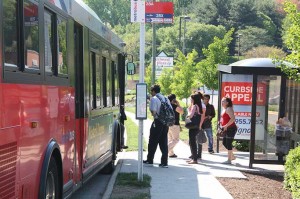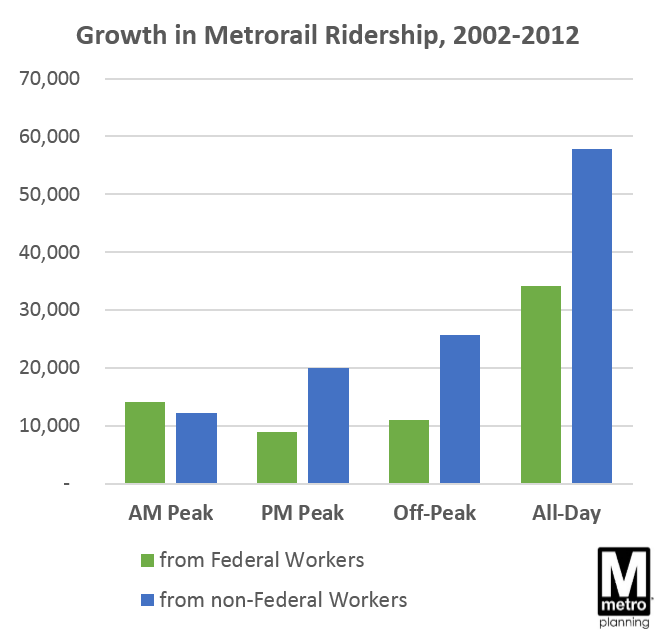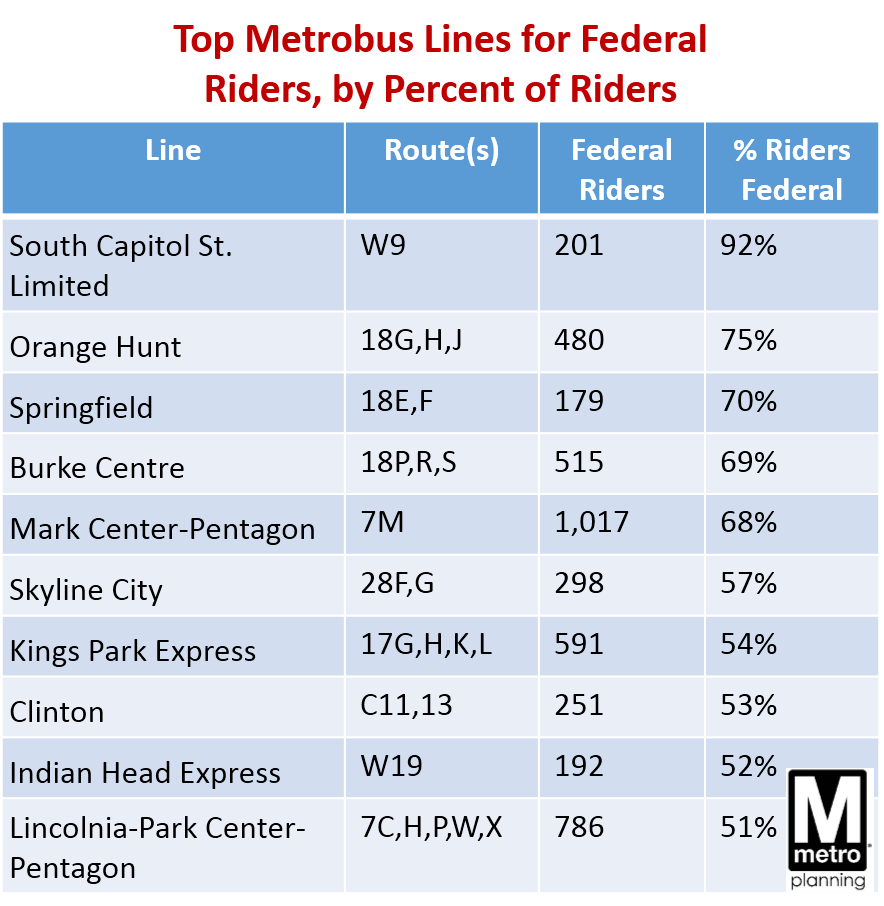When Work Evolves – Metrorail in the Era of the Flexible Workplace
Between 2007 and 2012, off-peak work trips were the fastest-growing segment of Metrorail ridership.
The traditional “rush hour” remains important, but Metrorail ridership seems to reflect a broader trend regionally – people are making more and more trips during “off peak” hours. According to the 2012 Metrorail survey, rail ridership growth was stronger in its off-peak (8 percent since 2007) than the peak (5 percent over the same time period). In certain jurisdictions – including those that have fostered re-investment in dense, walkable areas – off peak growth was into the double digits while peak growth grew more modestly. In one jurisdiction, off-peak trips grew by 50% during this period while peak trips grew at less than half that clip.
| Compact Jurisdictions | Peak | Off-Peak |
| % Change | % Change | |
| District of Columbia | 8.3% | 12.9% |
| Arlington County | 18.4% | 9.0% |
| City of Alexandria | 9.5% | 12.7% |
| Montgomery County | 0.1% | 5.9% |
| Prince George’s County | -7.4% | -1.4% |
| Fairfax County | -1.4% | 3.0% |
| City of Falls Church | 21.3% | 46.9% |
| Fairfax City | 32.8% | 19.4% |
| Compact Total | 3.0% | 8.0% |
Data sources, Metrorail ridership surveys, 2007 and 2012. 2012 is the most recent dataset we have on trip purpose.
In the past these trips would be for theaters, late night entertainment, or shift work, but the bulk of these off-peak trips were during the midday – almost twice the number of late night trips – and the bulk of these trips were for work. Read more…










Recent Comments